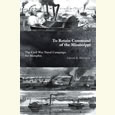Beyond the Blank Page
Rami Shapiro and Aaron Shapiro turn the practice of writing away from the methodical and toward the spiritual
I collect books about writing. I have a bookshelf full of them. It acts as a medicine cabinet when I’m feeling directionless and down. These volumes offer the perfect remedy, a self-help book disguised as an art primer. Just a page of Anne Lamott, Vivian Gornick, or William Zinsser can give me the carpe diem high I need to get through that mind-numbing meeting or difficult parenting task. For a moment, I can inhabit the story of those who live, breathe, and put food on the table through the written word. After the last page, I close the cover, ready to write my own story, to put what I’ve learned to work. Instead I find myself never opening that door to a new life I’d been so certain the books had just unveiled.
 I expected Writing—the Sacred Art: Beyond the Page to Spiritual Practice to be the same kind of temporary fix, though perhaps one with a transcendental twist. But as Rabbi Rami Shapiro and his son, Aaron Shapiro, declare in their introduction, this book isn’t designed to inspire but to conspire against us—the part of us, at least, that believes reading a book about writing will help us be the people we dream of being. The Shapiros’ purpose is less about turning their readers into more accomplished writers than about helping them become more liberated people. “Writing as a spiritual practice is about freeing us from the stories we tell, even as we continue to tell them,” they write. The book combines practice—in the form of writing prompts—with a heavy dose of philosophy and some stories from their vocations as spiritual leader and writing teacher. As writing mentors, they’ve designed their exercises to help break the habitual way we think about ourselves and liberate our futures from the claims of our past. As spiritual teachers, they share stories like that of a woman whose father had named her and raised her to be like the sister he lost in the Holocaust, limiting the foods she ate, the colors she wore, and the hobbies she pursued. When her father died, Rabbi Rami helped her to see how our lives are full of different storylines to be left behind like debts, forgiven. This awareness gave this woman a chance to explore her own interests and directions rather than continue the ones that had been given to her.
I expected Writing—the Sacred Art: Beyond the Page to Spiritual Practice to be the same kind of temporary fix, though perhaps one with a transcendental twist. But as Rabbi Rami Shapiro and his son, Aaron Shapiro, declare in their introduction, this book isn’t designed to inspire but to conspire against us—the part of us, at least, that believes reading a book about writing will help us be the people we dream of being. The Shapiros’ purpose is less about turning their readers into more accomplished writers than about helping them become more liberated people. “Writing as a spiritual practice is about freeing us from the stories we tell, even as we continue to tell them,” they write. The book combines practice—in the form of writing prompts—with a heavy dose of philosophy and some stories from their vocations as spiritual leader and writing teacher. As writing mentors, they’ve designed their exercises to help break the habitual way we think about ourselves and liberate our futures from the claims of our past. As spiritual teachers, they share stories like that of a woman whose father had named her and raised her to be like the sister he lost in the Holocaust, limiting the foods she ate, the colors she wore, and the hobbies she pursued. When her father died, Rabbi Rami helped her to see how our lives are full of different storylines to be left behind like debts, forgiven. This awareness gave this woman a chance to explore her own interests and directions rather than continue the ones that had been given to her.
Rami Shapiro directs The Writer’s Loft at Middle Tennessee State University, a mentor-based program in creative writing; Aaron Shapiro teaches in the English Department at MTSU and also mentors students of The Writer’s Loft. Writing as one voice to insure coherence and illustrate the constructed nature of the narrated “I,” they offer sage advice for the person who really wants to write a book but should first spend more time deconstructing the self. What they have presented in this book is a labyrinthine task. Thankfully, they offer clarity by way of organization: the exercises are divided into five interconnected levels of consciousness, with a chapter each for practices focusing on the body, heart, mind, soul, and spirit.
 The authors take care to explain these metaphorical places of focus through the lens of most major world religions and their own experiences. With each chapter and prompt, they peel back the layers of delusion that we use language to create. Each assignment is designed to reveal “writing that meets the world as directly as possible.” The chapter on the body, for example, explains how it is possible to use language without also needing to impose meaning on everything around us. The chapter on the heart teaches the reader how to write like a person “shattered: when all the love within you dies, when reality puts you in a situation where you have no choice but to be fully, personally present to another.” In the chapter on mind, they attack language itself, trying out party games from the Surrealists and wordplay from Carroll to Joyce. Language is a lie we agree on, “a kind of magic,” and the Shapiros intend to break its spell on us even as they teach us to cast new ones.
The authors take care to explain these metaphorical places of focus through the lens of most major world religions and their own experiences. With each chapter and prompt, they peel back the layers of delusion that we use language to create. Each assignment is designed to reveal “writing that meets the world as directly as possible.” The chapter on the body, for example, explains how it is possible to use language without also needing to impose meaning on everything around us. The chapter on the heart teaches the reader how to write like a person “shattered: when all the love within you dies, when reality puts you in a situation where you have no choice but to be fully, personally present to another.” In the chapter on mind, they attack language itself, trying out party games from the Surrealists and wordplay from Carroll to Joyce. Language is a lie we agree on, “a kind of magic,” and the Shapiros intend to break its spell on us even as they teach us to cast new ones.
In their section on writer’s block, the authors explain that for serious writers the stakes are always higher than what we do or do not produce. This book doesn’t mess with the fear of failure; it aims for fears far greater than the anxious voices in a writer’s head. The Shapiros encourage us to see beyond the worry that we have nothing to say right now but also to face the anxiety that the present silence will consume our lives: “Coming to the end of speech can be a moment of blessed silence,” they write. “It ought to be welcomed rather than feared.” This book doesn’t want us simply to face the blank page: it wants us to jump off the semantic cliff.
In a world inundated with words and phrases designed to sell us something or to tell stories of people to whom we have less and less actual connection, the Shapiros invite their readers to do more than just add to the chorus. Writing—the Sacred Art is a gift to anyone who wants rediscover the meaning behind what we say and write.


